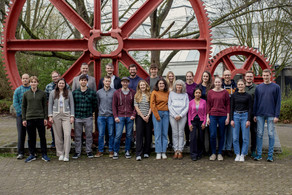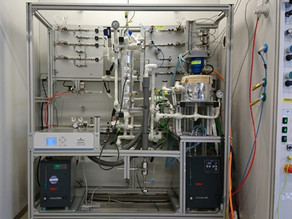Modeling of the combined deactivation and reaction kinetic behavior of an impregnated Ni/Al2O3 catalyst in the CO2 methanation reaction
Moritz Langer, Mathias Waldner, Hannsjörg Freund
Chemical Engineering Journal, Volume 524 (2025)
Abstract
Catalyst deactivation plays a decisive role in the design and for the economic viability of a catalytic process. This applies in particular to the design of load-flexible Power-to-X processes such as the CO2 methanation. A holistic mathematical description of the deactivation and reaction kinetics opens up the possibility of numerically optimizing reactor and plant design and operation over the entire catalyst lifetime. In this paper, we investigate the kinetic deactivation behavior of the CO2-methanation reaction on an Ni/Al2O3 catalyst in a wide range of operating conditions. From the analysis of the measured data, we identify the hydrothermal sintering of the carrier and/or Ni nanoparticles and the CO induced restructuring of the nanoparticles as possible deactivation mechanisms. These two mechanisms are modeled with empirical general power law rate expressions. The reaction kinetics, which are non-separable from deactivation for the reverse water-gas shift reaction and separable from deactivation for the CO methanation, are included in the deactivation model using an existing quasi-steady-state kinetic model for the same catalyst. With this approach, we are able to accurately describe the combined deactivation and reaction kinetic behavior and provide a holistic kinetic model for the CO2 methanation reaction




